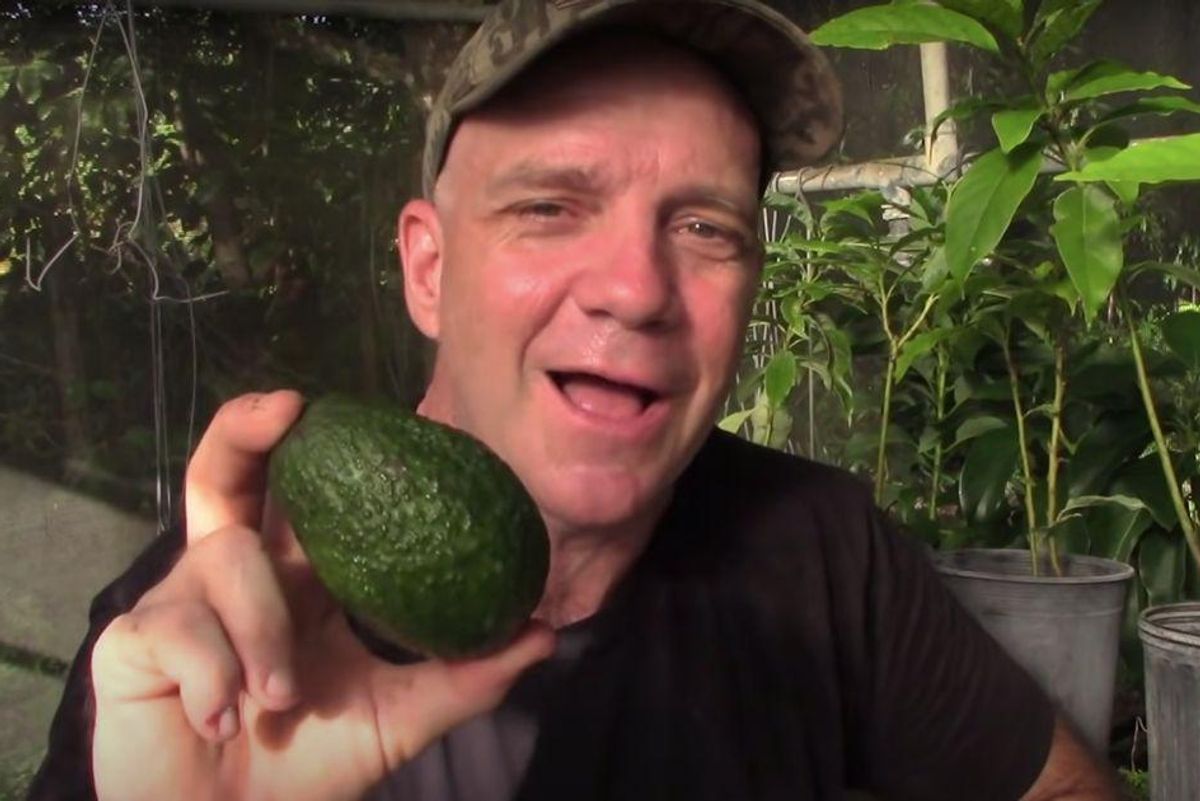Avocado farmer explains secret why you can't grow Hass avocado trees from Hass seeds
Did you know this?

An avocado tree farmer explains the science of Hass avocados
Have you ever seen anyone put an avocado pit in water to grow an avocado tree?
I've seen lots of people try, but only a few succeed. My mom has a tiny avocado tree growing in her living room that she managed to grow from the pit of a Hass avocado she ate. It's small but thriving, and I've often wondered if it will ever grow actual avocados.
As it turns out, it could—but they won't be Hass avocados.
Wait, huh?
In a wow-that's-an-interesting-factoid-I-never-knew-before YouTube video, an avocado farmer explains why a Hass avocado seed doesn't grow into a Hass avocado tree. Avocados, apparently, are not "true to seed" plants, meaning if you plant the seed, you'll end up with a different variety of the fruit the seed came from. Apples are the same—if you plant a Fuji apple seed, you will not get a Fuji apple tree.
In fact, chances are really, really high that you'll get an avocado or an apple that tastes terrible if you try to grow it from the seed of an existing fruit.
The guy from Sleepy Lizard Avocado Farm, Tom Siddons, explains how it all works using an analogy with candy flavors. This is the genetics lesson we all needed in school when we were trying to figure out Punnett squares, and he explains it all so clearly.
Incredible how nature works, and so amazing what human beings have been able to figure out over millennia of agricultural advancements.
So how do you get a Hass avocado tree if not from a Hass avocado seed? As Siddons explains in the video, you can plant the pit and start to grow the tree, but if you want Hass avocados you have to graft a branch of a Hass avocado tree onto the stem of the tree you're growing.
Or, you can just buy a baby Hass avocado tree that's already been grafted, which is probably a heck of a lot easier than doing it yourself.
So, go ahead and sprout that seed in water and grow yourself a pretty avocado plant if you'd like. Just don't expect any yummy avocados from it since your chances are about 1 in 10,000 that it'll happen.
Thanks for the fascinating lesson, avocado guy!
This article originally appeared three years ago.
- A cringey essay on 'easy breezy millennials' generated an ... ›
- There's a reason most millennials can't afford to buy a house. And ... ›
- This science fair winner is taking on global drought using oranges ... ›
- Myanmar uses drones to plant trees - Upworthy ›
- Why you might try peeling your bananas the way monkeys do - Upworthy ›

